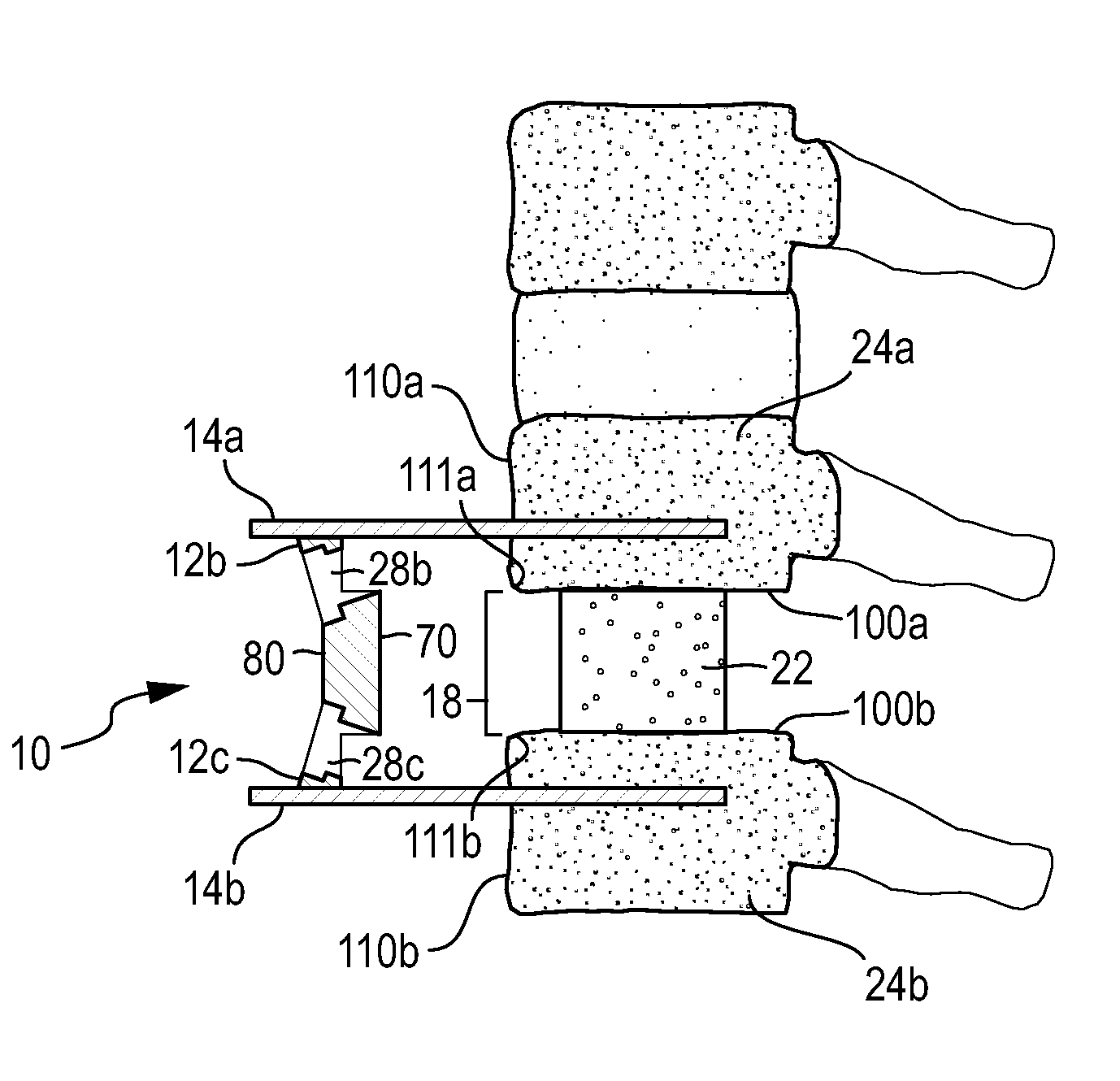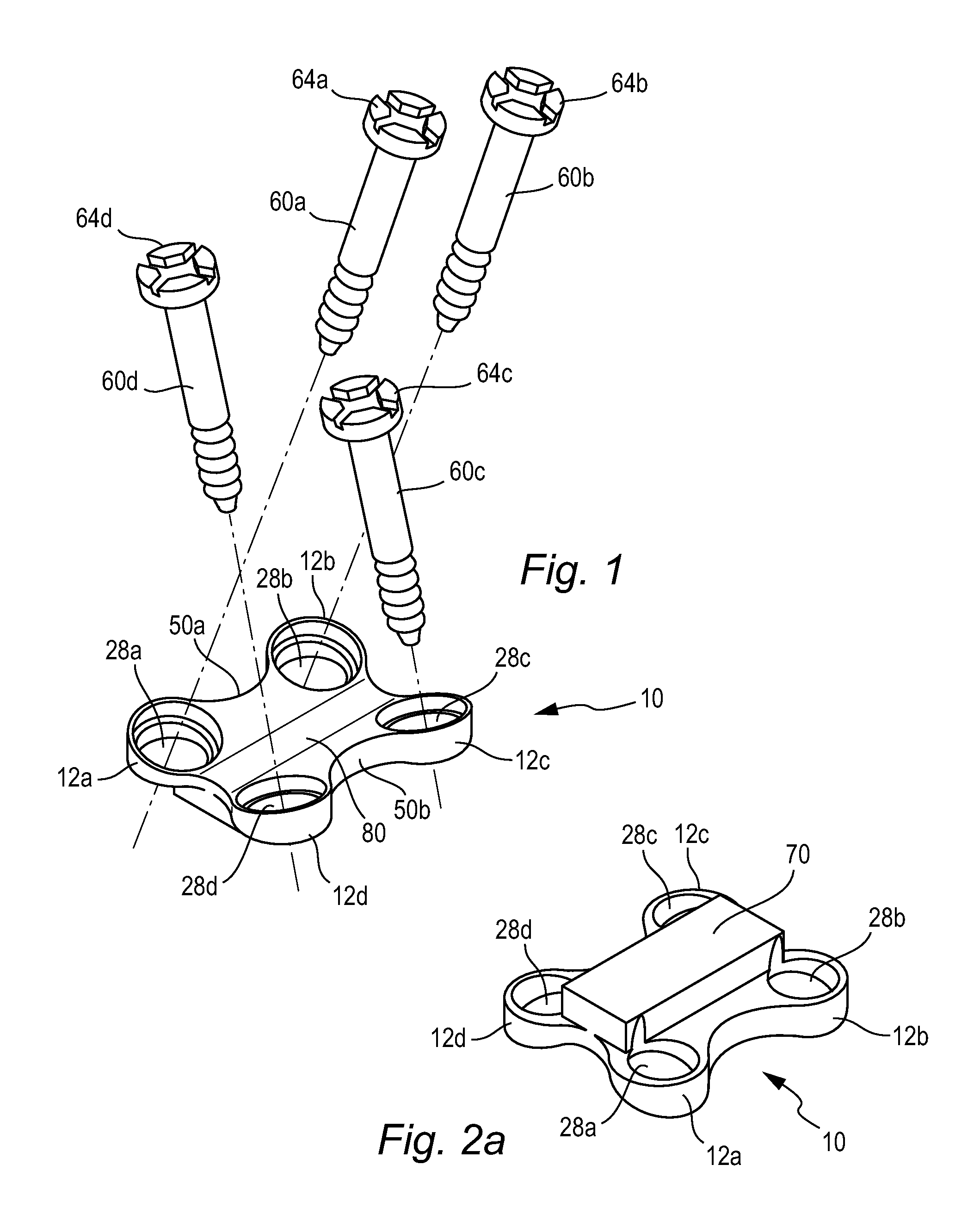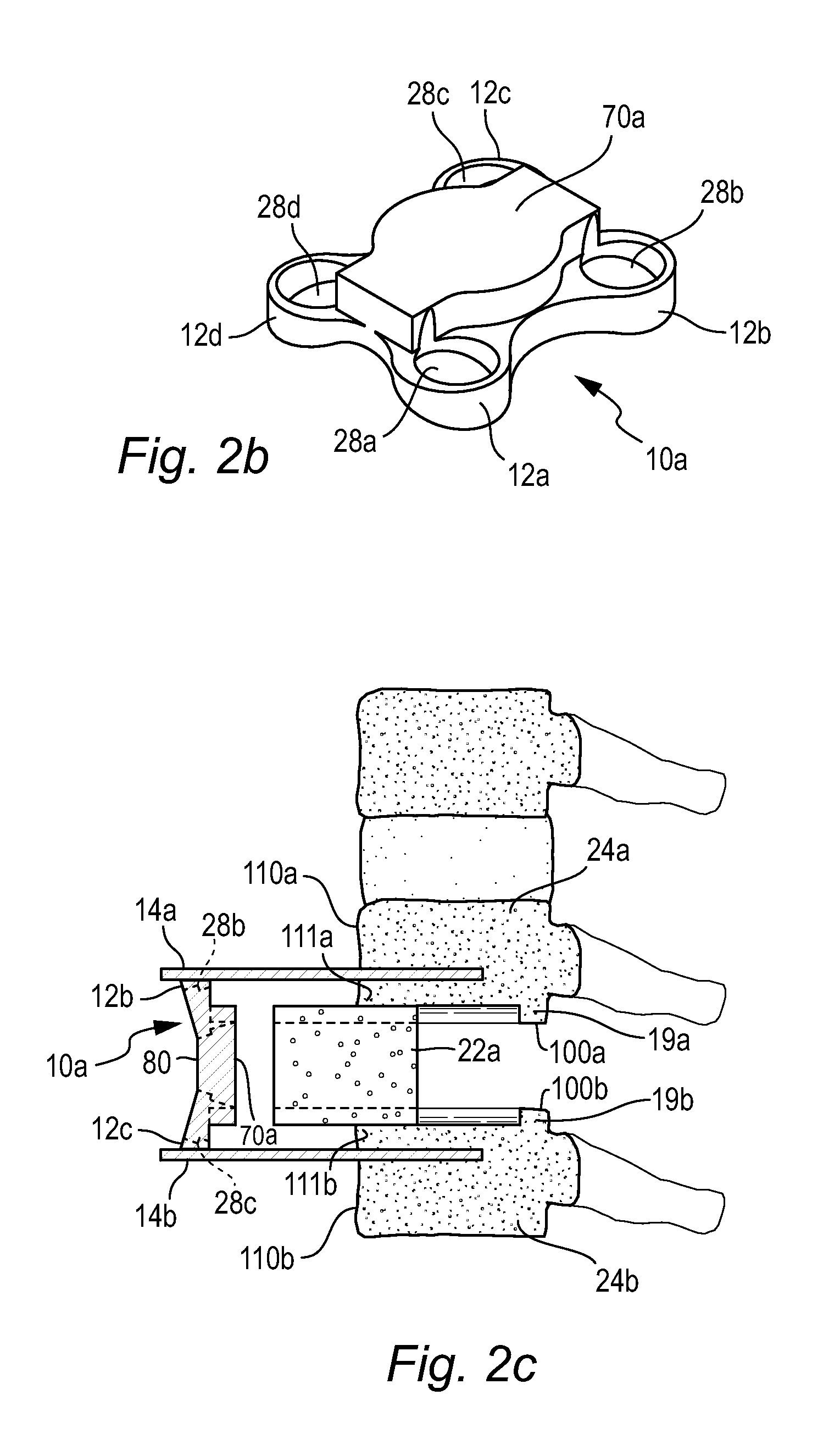Low-profile anterior vertebral plate assemblies and methods of use
a technology of anterior vertebral plates and low-profile, which is applied in the field of low-profile anterior vertebral plates, can solve the problems of affecting the fusion process, and requiring spinal fusion patients to suffer from severe pain, and the graft is associated with a relatively high rate of dislocation, and is not easily compressible. , the problem of low fusion ra
- Summary
- Abstract
- Description
- Claims
- Application Information
AI Technical Summary
Benefits of technology
Problems solved by technology
Method used
Image
Examples
Embodiment Construction
[0029]Embodiments of the present invention are described below with reference to the above described Figures. It is, however, expressly noted that the present invention is not limited to the embodiments depicted in the Figures, but rather the intention is that modifications that are apparent to the person skilled in the art and equivalents thereof are also included.
[0030]FIGS. 1, 2a, and 3 show an unhinged vertebral plate assembly 10, FIG. 2a shows an alternative unhinged vertebral plate 10a having an alternative posterior face 70a, FIG. 2c shows an alternative vertebral plate 10a and alternative graft 22a being implanted, FIG. 2d shows anterior view of an alternate graft 22a implanted into an intervertebral space, FIGS. 4-6 show a vertebral plate assembly 10 being implanted, FIGS. 8-9 shown a hinged vertebral plate assembly 10b, and FIGS. 10-11 shown an implanted hinged plate assembly 10g. Methods provided herein for installing the non-hinged vertebral plate assemblies 10 and 10a c...
PUM
 Login to View More
Login to View More Abstract
Description
Claims
Application Information
 Login to View More
Login to View More - R&D
- Intellectual Property
- Life Sciences
- Materials
- Tech Scout
- Unparalleled Data Quality
- Higher Quality Content
- 60% Fewer Hallucinations
Browse by: Latest US Patents, China's latest patents, Technical Efficacy Thesaurus, Application Domain, Technology Topic, Popular Technical Reports.
© 2025 PatSnap. All rights reserved.Legal|Privacy policy|Modern Slavery Act Transparency Statement|Sitemap|About US| Contact US: help@patsnap.com



